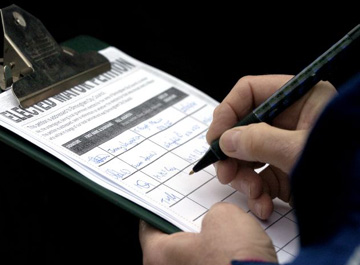
Good news California. The U.S. Supreme Court may have just inadvertently helped us put an end to the maddening referendum process that pollutes every election cycle in our state. Yesterday, in the case of Doe, et al. v. Reed, Washington Secretary of State, the Supreme Court voted 8-1 that individuals who sign petitions to put referendums on state ballots do not have a privacy right under the First Amendment to keep their name a secret.
The case arose out of a Washington State ballot measure that sought to overturn a state domestic partnership law. Opponents of the measure sought to obtain the names of the 130,000 individuals who signed the petition in order to verify that the signatures were valid. A group called Protect Marriage Washington, which opposes gay marriage, sued to block the release of the names, arguing that those who signed would be subject to threats and harassment, and would likely have their names posted on the internet. Signers, the group argued, have a right to privacy that is protected by the First Amendment.
At first, a federal judge agreed, and prevented the release of the names, but the 9th Circuit Court of Appeals overturned the trial judge in favor of releasing the information. The Supreme Court then took the case on and ultimately agreed with the 9th Circuit.
 North County San Diego Injury Lawyers
North County San Diego Injury Lawyers








